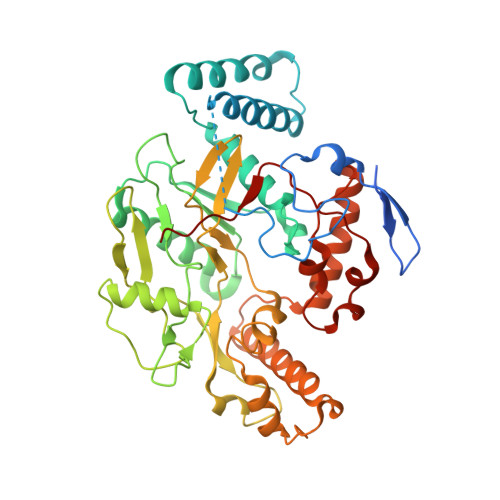Hydrophilic, Potent, and Selective 7-Substituted 2-Aminoquinolines as Improved Human Neuronal Nitric Oxide Synthase Inhibitors.
Pensa, A.V., Cinelli, M.A., Li, H., Chreifi, G., Mukherjee, P., Roman, L.J., Martasek, P., Poulos, T.L., Silverman, R.B.(2017) J Med Chem 60: 7146-7165
- PubMed: 28776992
- DOI: https://doi.org/10.1021/acs.jmedchem.7b00835
- Primary Citation of Related Structures:
5VUI, 5VUJ, 5VUK, 5VUL, 5VUM, 5VUN, 5VUO, 5VUP, 5VUQ, 5VUR, 5VUS, 5VUT, 5VUU, 5VUV, 5VUW, 5VUX, 5VUY, 5VUZ, 5VV0, 5VV1, 5VV2, 5VV3, 5VV4, 5VV5, 5VV6, 5VV7, 5VV8, 5VV9, 5VVA, 5VVB, 5VVC, 5VVD, 5VVG, 5VVN - PubMed Abstract:
Neuronal nitric oxide synthase (nNOS) is a target for development of antineurodegenerative agents. Most nNOS inhibitors mimic l-arginine and have poor bioavailability. 2-Aminoquinolines showed promise as bioavailable nNOS inhibitors but suffered from low human nNOS inhibition, low selectivity versus human eNOS, and significant binding to other CNS targets. We aimed to improve human nNOS potency and selectivity and reduce off-target binding by (a) truncating the original scaffold or (b) introducing a hydrophilic group to interrupt the lipophilic, promiscuous pharmacophore and promote interaction with human nNOS-specific His342. We synthesized both truncated and polar 2-aminoquinoline derivatives and assayed them against recombinant NOS enzymes. Although aniline and pyridine derivatives interact with His342, benzonitriles conferred the best rat and human nNOS inhibition. Both introduction of a hydrophobic substituent next to the cyano group and aminoquinoline methylation considerably improved isoform selectivity. Most importantly, these modifications preserved Caco-2 permeability and reduced off-target CNS binding.
- Department of Chemistry, Department of Molecular Biosciences, Chemistry of Life Processes Institute, Center for Molecular Innovation and Drug Discovery, Northwestern University , Evanston, Illinois 60208-3113, United States.
Organizational Affiliation:
























